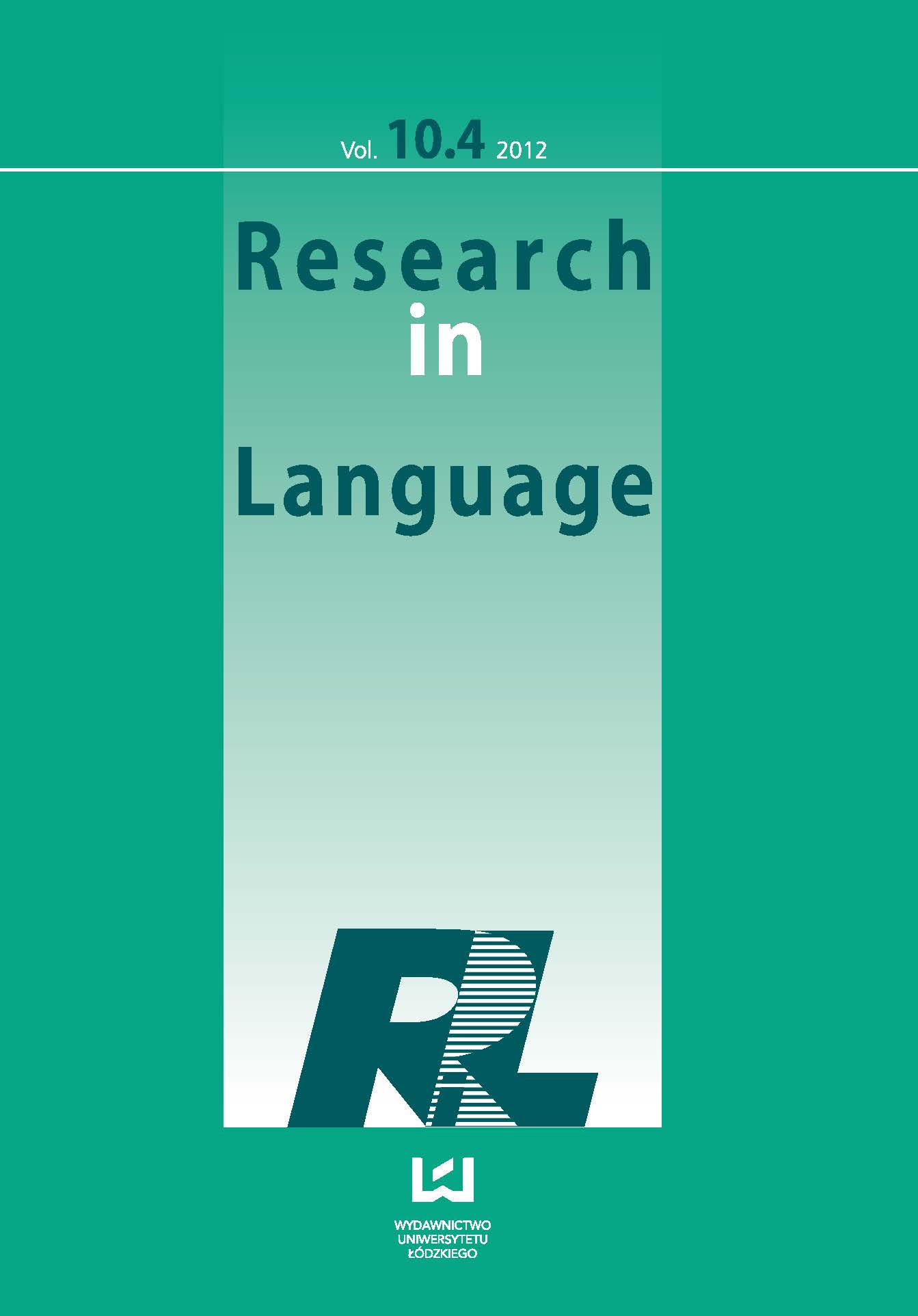The Relevance-Based Model of Context in Processing Puns
DOI:
https://doi.org/10.2478/v10015-012-0001-0References
Attardo, Salvatore 1994. Linguistic theories of humor. New York: Mouton.
Google Scholar
Attridge, Derek 1988. Unpacking the portmanteau, or who’s afraid of Finnegan’s Wake. In J. Culler (Ed.), On puns: The foundation of letters (140-155). New York: Blackwell.
Google Scholar
Bielski, Marek 1999. “Puns and word-play in advertising”. In J. Arabski (Ed.), PASE papers in language studies (37-42). Katowice: PARA.
Google Scholar
Bucaria, Chiara 2004. “Lexical and syntactic ambiguity as a source of humor: The case of newspaper headlines”. Humor, 17, no. 3: 279-309.
Google Scholar
Carston, Robyn 2002. Thoughts and utterances: The pragmatics of explicit communication. Oxford: Blackwell.
Google Scholar
Giora, Rachel 1997. “Understanding figurative and literal language: The graded salience hypothesis”. Cognitive Linguistics, 7: 183-206.
Google Scholar
Giora, Rachel 2003. On our mind: Salience, context, and figurative language. New York: Oxford University Press.
Google Scholar
Heller, L. G. 1974. “Toward a general typology of the pun”. Language and Style, 7: 271-82.
Google Scholar
Koestler, Arthur 1964. The act of creation. London: Hutchinson.
Google Scholar
Norrick, Neal 1984. “Stock conversational witticisms”. Journal of Pragmatics, 8: 195-209.
Google Scholar
Partington, Alan Scott 2009. “Linguistic account of wordplay: The lexical grammar of punning”. Journal of Pragmatics, 41: 1794-1809.
Google Scholar
Pepicello, William J. & Thomas A. Green. 1983. The language of riddles. Columbus: Ohio State University Press.
Google Scholar
Redfern, Walter 1982. Puns: More senses than one. London: Penguin.
Google Scholar
Redfern, Walter 1984. Puns. Oxford: Blackwell.
Google Scholar
Redfern, Walter 1996. “Puns: Second thoughts”. Humor, 9, no. 2: 187-198.
Google Scholar
Sobkowiak, Włodzimierz 1991. Metaphonology of English paronomasic puns. Frankfurt-am-Main: Peter Lang.
Google Scholar
Solska, Agnieszka (forthcoming a). “Relevance-theoretic comprehension procedure and processing multiple meanings in paradigmatic puns”.
Google Scholar
Solska, Agnieszka (forthcoming b). “The relevance of the juxtaposition of meanings in puns”.
Google Scholar
Sperber, Dan and Deirdre Wilson 1986/1995. Relevance: Communication and cognition. Oxford: Blackwell.
Google Scholar
Tanaka, Keiko 1992. “The pun in advertising”. Lingua, 87: 91-103.
Google Scholar
Tanaka, Keiko 1994. Advertising language: A pragmatic approach to advertisements in Britain and Japan. London: Routledge.
Google Scholar
Wilson, Deirdre & Dan Sperber 2004. “Relevance theory”. In G. Ward & L. Horn (Eds.), Handbook of pragmatics (607-632). Oxford: Blackwell.
Google Scholar
Yus, Francisco 2003. “Humor and the search for relevance”. Journal of Pragmatics, 35: 1295-1331.
Google Scholar
Zwicky, Arnold & Elizabeth Zwicky 1986. “Imperfect puns, markedness and phonological similarity. With fronds like these, who needs anemones”. Folia Linguistica, 20: 493-503.
Google Scholar
Downloads
Published
How to Cite
Issue
Section
License

This work is licensed under a Creative Commons Attribution-NonCommercial-NoDerivatives 4.0 International License.










